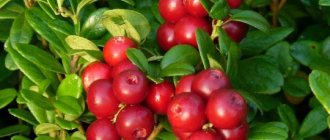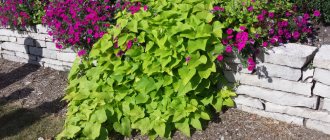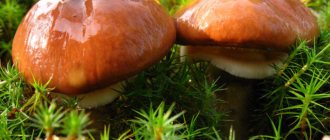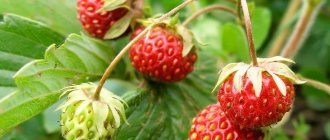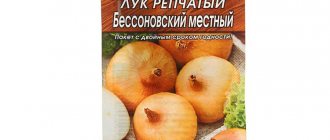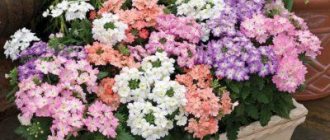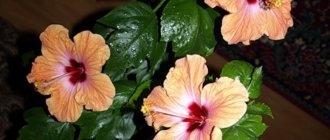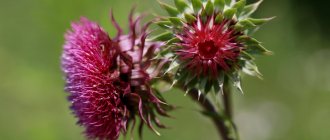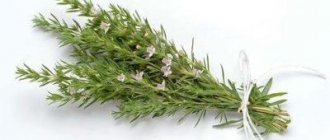Description of indoor geranium
Pelargonium, also known as indoor geranium, belongs to perennial plants from the Pelargonium geranium family. Translated from Greek it means crane. And people call it “crane nose.”
Her homeland is South Africa. Depending on the species, it is either a herbaceous plant or a subshrub. Homemade geranium usually grows to a maximum height of 1 m. It often has straight stems, but sometimes, depending on the species, the plant can form in the form of branches or creeping shoots.
The wide, curly leaves have a finger-like structure. Usually the leaves have a dissected shape, sometimes they are pinnate. The color of the leaves can be either uniform or zonal. In the second case, transitions from brighter to less intense shades of green are possible.
Flowers come in a variety of shades. The exception is the blue tint - the house plant does not have flowers of this color. Inflorescences of various shapes are usually formed. There are two main groups of indoor geraniums. The first includes varieties with bright and beautiful flowers, the second - with less noticeable flowers, but more fragrant leaves.
The flowering season of pelargonium, provided a sufficient amount of heat is maintained, can last almost the entire year, from spring to autumn.
Geranium - benefits for the home
In folk practice, there are many recipes based on various parts. But even just a flower growing in a room brings a lot of benefits to the room and its inhabitants.
Back in the middle of the last century, bright plants were kept on the windowsill in almost every home. Our grandmothers considered the flower a talisman for their home.
Geranium has the following properties:
- cleans the air in the room, destroying harmful bacteria;
- enhances the positive energy at home, extinguishes irritation and anger of family members, helps restore relationships between quarreling spouses, has a beneficial effect on the nervous system, helps to relax and promotes sound sleep;
- indoor geranium has an antiviral effect, which is especially important during the cold and flu season;
- the smell of geranium protects the house from unwanted insects. In the summer, in the house where these flowers are planted, you will not find either mosquitoes or annoying flies. In addition, you do not need to use additional anti-moth products. Many gardeners even plant outdoor varieties on the site to preserve the harvest from the invasion of garden pests.
Chemical composition of geranium
The fragrant indoor flower has a number of useful properties due to its rich composition, which includes:
- glucose – improves brain function, relieves causeless anxiety, fear, depression;
- fructose – tones, relieves fatigue, prevents the development of caries;
- flavonoids – have an antibacterial effect, normalize blood pressure;
- catechins – protect the body at the cellular level, have an antioxidant effect;
- saponins - have a diuretic, tonic, anti-inflammatory effect;
- tannins – have an aseptic, astringent, hemostatic effect;
- carotene – cleanses the body of harmful substances, accelerates the process of cell regeneration, prevents the appearance of malignant tumors;
- vitamin C – slows down the aging process of the body, increases immune defense;
- vitamin K – improves the blood clotting process;
- alkaloids – have a sedative effect, have a positive effect on the cardiovascular system, and have an antimicrobial effect;
- anthocyanins – serve as powerful antioxidants, slow down the aging process of the skin, treat neurological diseases;
- manganese – regulates metabolic processes, reduces cholesterol and fat deposits;
- copper – participates in the production of collagen, normalizes the functioning of the digestive tract.
What are the health benefits of geranium?
If you find an error, please highlight a piece of text and press Ctrl Enter.
Pelargonium is a genus of heat-loving plants common in indoor floriculture and landscape design. Potted flowers that many people call geraniums are actually members of the genus Pelargonium. They do not cross with true geraniums from the genus Geranium. The differences are easier to see by comparing photos of indoor flowers, for example, zonal and grandiflora pelargonium, with the natural species - meadow geranium.
Who is who
Inattention to systematic position and detail has given rise to a real boom associated with the beneficial properties of indoor geranium. Almost all the medicinal properties that are now attributed to indoor plants have, in fact, been known for a long time. However, they are characteristic of natural species of the genus Geranium - meadow and blood-red.
All of the above does not mean that indoor and garden geraniums are not beneficial. Plants contain valuable chemicals and are used in folk medicine and everyday life. Only taking preparations of these plants internally has not been studied enough, so it is not recommended.
The names of two different genera of the geranium family reflect the similarity of the fruits of plants with the beak of a stork and a crane. Meadow geranium is also called crane grass. One flower from the same genus, growing everywhere, was called the common stork. The word pelargós means “stork” in Greek. If you observe the ripening of the seeds of indoor geraniums, it is easy to notice that they resemble a long and thin beak of a stork.
Confusion in names has a long history; it is due to the fact that the founder of the botanical classification, Linnaeus, initially classified geraniums and pelargoniums into the same genus. Much later it turned out that the family ties between these plants are not so close. These are two different genera within the same family.
The flower of geraniums and pelargoniums consists of 5 petals (except for semi-double and double varieties of indoor plants). The corollas of geranium are actinomorphic, regular in shape, and look like a star. Pelargonium flowers are slightly asymmetrical: the 2 upper petals differ in shape and location from the 3 lower ones.
In nature, plants belonging to different genera do not interbreed. Therefore, geraniums are those flowers that bloom in forests, fields, meadows and wastelands. Pelargoniums flaunt on window sills and flower beds. The most popular varieties are obtained from the species P. zonal, P. royal, and P. fragrant.
Previously, zonal geranium was called a “philistine flower.” There was not such a window in the houses of the poor and middle class, where there were not pots with round flowering “heads”: red, pink, white. The reason for this popularity should be sought in the research of biochemists and doctors of the last century. Experts have found that the essential oils and phytoncides of indoor geranium kill bacteria, even the tuberculosis bacillus.
The antimicrobial properties of geranium phytoncides have been tested in modern experiments. The researchers applied drops containing millions of Staphylococcus bacteria to geranium leaves. After 3 hours, most of the bacteria died. At a distance of 5 mm from the leaf, bacteria died within 6 hours.
The phytoncidal properties of indoor plants are useful in homes with children and often sick elderly people. The aroma of geranium helps relieve headaches, nervous tension, fatigue, and normalize sleep.
There is a belief that the smell of zonal geranium is not liked by unfaithful spouses. The plant makes it possible to conduct the simplest “test for treason”, but does not guarantee the accuracy of the result. Scented geraniums are also believed to repel flies.
A strong, pungent odor appears when you touch the leaves of zonal pelargonium. The aroma of royal geranium is subtler and more pleasant. If you rub the leaves of fragrant pelargonium, you will smell lemon, mint, ginger, and lemon balm. Geranium (pelargonium) and its oil are used in aromatherapy. The juice of the plant is a local remedy for the treatment of otitis media.
To take advantage of the benefits of a houseplant, you need to purchase geranium oil at the pharmacy. Used externally for dermatitis, burns, ulcers, eczema. Geranium oil is suitable for air disinfection for upper respiratory tract infections, inflammation of the pharynx, middle ear, and sinusitis. In Eastern medicine, the drug is prescribed locally for cervical cancer.
Geranium oil mixed with other substances treats varicose veins and is added to cosmetic products for skin and hair care. You can simply mix a few drops of aromatic liquid with face cream, shampoo or balm.
Chemical composition
Geraniol is one of the main beneficial components in the leaves of indoor fragrant geranium (pelargonium). This is a light yellow aromatic liquid, a volatile alcohol, a substance from the terpenoid group. Geraniol has a rose scent and is found in essential oils of geranium, palmarosa, lemongrass, and rose.
Other organic compounds in Pelargonium odorata leaves:
- tanning agents, tannins;
- organic acids;
- flavonoids;
- glycosides;
- phytoncides;
- coumarins;
- saponins;
- pectins;
- starch;
- gum;
- resin.
The leaves of the wild medicinal plant meadow geranium are rich in mono-, di- and polysaccharides. Contains alkaloids, flavonoids, anthocyanins, vitamins C, K, carotene, saponins. Carbohydrates, flavonoids, tannins and saponins are also found in the roots of the plant. The chemical composition of underground organs is enriched with catechins and phenolcarboxylic acids.
Those who are planning to take advantage of the healing properties of geranium should be attentive to the characteristics of different types. In most publications, far from official and traditional medicine, geraniums are credited with miraculous properties, without specifying which plant they are talking about.
If we talk about geraniums in the room, then these are plants belonging to the Pelargonium genus. Medicinal herbs described in reference books and manuals on herbal medicine are mainly two species of the genus Geranium. Plants are completely different, with different composition and properties.
It is also necessary to remember that when obtaining varieties and hybrids of pelargonium, some chemical components characteristic of natural species were lost. Or substances that are not characteristic of plants of these species have appeared. For example, varieties of fragrant geranium have been developed that smell like apple, rose, caramel, peach, mint, and nutmeg.
Experts classify interspecific varieties as belonging to the Pelargonium x hortorum group. No one is studying their chemical composition and medicinal properties. They were not bred for medical purposes.
Meadow geranium is found in nature on forest edges, in river valleys, and in the shade near fences. Blood red geranium prefers drier places, the southern slopes of mountains and hills. The medicinal raw material is grass; roots are less commonly used. Real geraniums, their decorative forms and varieties, are also used in floriculture, but less often than pelargoniums. The flowers of the plant are lilac, purple with stripes, the leaves are carved, often reddish-brown.
Medicinal properties
The smell of fragrant pelargonium calms the nerves and relieves headaches (not all types). The leaves of this plant, or rather, essential oils, have bactericidal, antispasmodic, anti-edematous and wound-healing properties.
Meadow geranium is a plant with disinfectant, astringent, anti-inflammatory and antitoxic effects. Used for insomnia, neuralgia, and lung diseases. Alcohol tincture in folk medicine is prescribed for heart disease.
Pelargonium sidoides is a plant that is found in South Africa. It was used to treat the Zulu tribes for many centuries. The English doctor C. Stevens brought the plant to Europe. Later, researchers at a German pharmaceutical company created an antimicrobial drug based on the plant extract.
Medicinal geranium and its beneficial properties. Varieties of geraniums and their characteristics
The plant is used in many fields of medicine because it has a healing effect. It has a beneficial effect on the entire body.
The beneficial properties characteristic of geranium are:
- elimination of pathogenic microorganisms of bacterial and viral nature from the source of inflammation, prevention of infectious diseases;
- healing of damaged surfaces, wounds, bruises;
- elimination of painful sensations;
- stopping the inflammatory focus by suppressing the influx of exudate together with cells of the immune system;
- elimination of heavy and chronic bleeding;
- anti-edema effect;
- increased diuresis with increased removal of toxic substances from the body;
- lowering blood sugar, helping to fight diabetes;
- elimination of malignant cells that periodically appear in the body.
geranium is used not only for decorative purposes, but also for the treatment and prevention of various diseases
Based on medicinal geranium, decoctions and infusions are prepared that help strengthen human immunity. Therefore, the body can cope with bacterial and viral infections on its own.
In addition, such products eliminate pathogenic microflora. These healing properties are used for preventive and therapeutic purposes.
There are many varieties of the plant. Pelargonium, which is grown at home, is considered the most common. Different varieties have their own aromas and medicinal properties:
- Lemon geranium. Has a lemon scent. The leaves are rough, with veins. The flowers are lilac in color. The plant is of hybrid origin.
- Felt pelargonium. It has white flowers with purple dots. During flowering it gives off a minty smell. The plant grows in the form of a small bush. Green hairs form on the leaves.
- Lugovaya. It has a multivitamin composition, contains flavonoids, phytoncides that help fight infectious diseases. But before preparing products from meadow geranium, the medicinal properties and contraindications should be checked with a doctor.
- Lady Plymouth. It is characterized by large leaves with a pink-white color and an aroma reminiscent of roses. The plant loves moisture, but should be watered in moderation.
- Apple. The plant is not tall, the flowers are small, white, the leaves are large, wavy. During flowering, the aroma of apple cider spreads. Loves moisture and needs frequent watering.
- Gray-haired lady. Geranium leaves are similar to Lady Plymouth, but with a silvery tint. The flowers are inconspicuous, small, white in color.
- Pelargonium curly. At the beginning of growth it looks like a small shrub. Over time, the trunk hardens to form a woody base. The maximum height reaches 70 cm. The leaves curl during growth. The aroma is lemon. The inflorescences can be different: white, lilac, pink, with bright purple stripes.
geranium amazes with its beauty and variety of colors
If the patient decides to undergo treatment with geranium, the risk of allergies should be completely eliminated. Even if a person has a reaction to another plant, cross-reaction may occur.
Medicinal properties of geranium
Steppe geranium has the following effects on the body:
- It has a blood purifying effect, so it can be used to treat gout.
- Relieves inflammation of the mucous membranes of the nose and mouth.
- Has antiviral and antibacterial effects.
- Relieves swelling.
- Is an active antioxidant.
- A decoction of geranium is effective for diabetes, diarrhea, kidney and liver diseases.
- An infusion from the plant can dissolve kidney stones.
- Removes toxins, nucleins and other harmful substances due to a large amount of tannins.
- Some healers use the plant to treat oncology.
- Flowers and leaves have an astringent, tonic, anthelmintic effect.
Geranium oil: properties and applications
The composition of geranium ether is rich in various useful elements. It contains alcohols and hydrocarbons. The phytoncides contained in it, which kill microbes and viruses, are of great benefit. Ether has a number of healing properties because:
- serves as an antiseptic;
- relieves pain;
- relieves inflammation;
- has an antibactericidal effect;
- heals wounds quickly;
- has antidiabetic properties;
- is a good insecticide.
Geranium essential oil is an excellent diuretic, astringent, vasoconstrictor, deodorizing, tonic, and sedative. Due to the large number of beneficial properties and minimal harm, ether is used in folk medicine, cosmetology, and aromatherapy. It is used for hand care and added to foot baths. The product increases muscle tone and helps with cellulite: for these purposes it is used for therapeutic and preventive purposes.
Dosage forms
Various dosage forms can be prepared from the aromatic plant:
- Essential oil. You can buy ready-made oil at the pharmacy, but you can prepare it yourself.
- Decoction. The crushed leaves and/or roots of the plant are poured with boiling water, the broth is filtered and cooled. The prepared medicine can be taken orally for diarrhea, osteochondrosis, rheumatism, used for gargling and hair, douched for uterine bleeding or female gynecological problems.
- Infusion - dry raw materials are infused in boiled water for at least 8 hours. The resulting infusion should be taken orally to normalize the functioning of the digestive tract, nervous system, etc.
- Freshly squeezed juice - just chop the leaves and stems and squeeze through cheesecloth.
- Dry powder - you can sprinkle it on sores and wounds. This product dries the skin, disinfects the wound, and helps it heal faster.
- Compresses - mash fresh leaves so that they release juice, apply to painful places and wounds.
- Ice cubes – used for facial skin problems.
- Geranium pillow – stuff the pillow with dried stems and flowers. Place it near the bed. This pillow soothes and relaxes, gives you a good night's sleep.
Use in folk medicine
As previously stated, it is not recommended to use geranium to treat children, especially under the age of 6 years. Children should not use tinctures, decoctions and juices, only products for external use.
Geranium oil has irritating properties, so you should not use it for a long period (more than 3 weeks) or on an empty stomach. In addition, allergies may manifest themselves in the form of cough, sore throat, runny nose, or even angioedema. If these symptoms appear, you should stop using the oil.
In addition to what has already been listed, the plant is contraindicated:
- pregnant women;
- people with low blood sugar;
- those who take contraceptives;
- elderly people;
- for stomach ulcers;
- for constipation;
- with a tendency to thrombophlebitis.
Pelargonium is one of the flowers that have healing properties. It is useful to have such a plant at home, because it will always come to the rescue. But remember all the contraindications and take care of yourself!
There are general contraindications and prohibitions on use due to individual intolerance. Geranium should not be used for medicinal purposes by pregnant and lactating women and small children. The plant is contraindicated for those who have hypersensitivity to geraniol and/or any other chemical component in the raw material.
An allergic reaction to geranium manifests itself in the form of a runny nose, sore eyes, watery eyes, itchy throat, and cough. If such symptoms appear, you should immediately stop using the product. You should also be careful when choosing a herbal preparation for those who have exacerbations of gastrointestinal diseases, varicose veins and thrombophlebitis.
Possible harm
It should be remembered that all parts of some types of indoor geraniums contain mild toxins. When touching the plant, using leaves for applications, or using juice for instillation, contact dermatitis may occur. Caution is required with all types of plant care, but especially when treating them.
Geranium is relatively harmless to people. However, hamsters, guinea pigs, and rabbits should not approach the succulent leaves. They are poisonous to small animals and cause skin burns.
Essential oil is widely used in the cosmetics and perfume industries. A volatile liquid with a rose-like aroma is obtained from rose geranium and is used in aromatherapy, folk medicine, and cooking. The smell helps strengthen the immune system and improves mood.
Geranium oil has the following effects:
- anti-inflammatory;
- antispasmodic;
- antiseptic;
- regenerating;
- invigorating.
In aromatherapy it is used to relieve fatigue and nervousness, lower blood pressure, combat insomnia and depression. The oil is used to treat acne, pimples, cellulite, and a number of other cosmetic problems. Added to cosmetic creams, shampoos, and massage products.
It is believed that the oil helps slow down age-related changes in the skin: increase its tone and smooth out wrinkles. It is enough to squeeze the juice from the leaves and freeze, and then wipe your face with cosmetic ice, or add a drop of oil to cosmetics for daily skin care.
The amazing healing properties of pelargonium have found application not only in the treatment of various diseases, but also in cosmetology. For example, from this plant you can prepare a mask that effectively eliminates acne and acne.
To do this, you need to take two or three young leaves of the plant, mash them into a paste and mix with a tablespoon of sour cream. The resulting mixture is applied to the face for 10-15 minutes and then washed off with warm water. But since geranium is considered a strong allergen, before using such a product you need to conduct an allergy test by smearing a small amount of the mixture on the skin on the bend of your elbow.
Separately, mention should be made of the amazing properties of the essential oil of this culture. It is widely used in folk medicine to relieve migraines, eliminate menstrual pain and quickly heal wounds.
A few drops of essential oil added to washing water will help cleanse the skin thoroughly. In addition, it can be used in various homemade masks on its own, or in combination with other essential oils.
Products based on this plant, like any other traditional medicine, have certain contraindications that must be taken into account before taking the drug. For example, such drugs should not be taken by pregnant and lactating women, elderly people and young children. It should also be borne in mind that pelargonium can cause a serious allergic reaction, so before using any product based on it, it is necessary to check the body for the presence of individual intolerance.
Remedies from this flower are contraindicated for people with stomach ulcers and low blood pressure, as well as for patients with thrombophlebitis or other diseases associated with high blood viscosity.
The author of the video will provide additional information about the beneficial properties of geranium.
Care and propagation of geraniums at home
In general, geranium is a truly unpretentious plant. If you follow a few important care rules, it will please the eye for a long time and bloom regularly.
Basic rules for caring for pelargonium:
Provide optimal hydration. It is very harmful to overwater geraniums, especially if there is no good drainage. Overdrying the soil will be more favorable for it than waterlogging the soil. It is undesirable for water to get on the leaves.
Therefore, spraying is fraught with fluid retention between the villi and the development of fungal disease. As a result, the leaves dry out, flowering deteriorates and ultimately the plant may die. It is very convenient to water from a tray or with a sprayer (on the ground only).
Geranium needs good lighting. If the pot is in a dark room, and also in winter, it can be additionally illuminated with LED lamps. If there is insufficient lighting, the flowers may be small and the flowering period will be shortened. Sometimes gardeners cannot understand why the leaves on a plant turn yellow. Most often this is due to too dry air or poor lighting.
Pelargonium tolerates high air temperatures well. At the same time, too low a temperature is unfavorable for the plant. Optimal temperature conditions are from 15 to 20 degrees.
The basis for good growth and flowering is regular, complete fertilizer. It is recommended to use liquid fertilizers. It is useful to add a small amount of iodine to water for irrigation. Organic feeding of geraniums is not required. It is enough to regularly apply complex mineral fertilizers with a high phosphorus content. It is recommended to fertilize throughout the entire growing season.
Pelargonium propagates in two ways - seeds and cuttings. The first method is somewhat more complicated. In addition, when planting hybrids, future plants will not necessarily retain their maternal properties.
To plant geranium seeds, you will need soil: 1 part peat and sand and 2 parts turf soil. Drainage is placed at the bottom of the pot, then the main part of the prepared soil. After the seeds are evenly distributed over the surface of the soil mixture (a distance of about 2 cm from each other), they are covered with the rest of the soil. Then the soil is moistened with a spray bottle.
Until the seeds germinate, the pot should be under film or glass; it is important to maintain a constant temperature of about 20 degrees. During this period, regular ventilation is necessary. The plants are watered regularly until 2 true leaves appear. Then, when the plant is trimmed to 6 leaves, all seedlings can be planted in separate pots.
A simpler propagation method is cuttings. This method is available at any time of the year. But in spring, root formation is more active. The cuttings separated from the plant are kept in the fresh air for several hours. Then it is placed in a container with loose soil or coarse sand. There is no need to cover the top with anything. After rooting, the cuttings are transplanted into a pot.
An even more common method of transplantation is to tear off a leaf of an adult pelargonium and place it in water. When roots form, plant in a permanent pot.
Reproduction methods
Cuttings
- Cut a cutting 5-7 cm long with 2-3 leaves.
- Dry for 24 hours.
- The cutting area is sprinkled with crushed coal and planted in geranium soil or light soil mixed with sand.
- After the roots appear, they are transplanted into a permanent pot.
Watch a video on how to propagate geraniums from cuttings:
Seeds
- Sow in a moist mixture of peat, turf soil and sand (1:1:2).
- Sprinkle the top with a 2 cm thick layer of soil.
- Water with a slightly pink solution of potassium permanganate.
- Cover with glass or film, ventilating every 3-4 days.
- Seeds will germinate at a room temperature of +18°.
- After 1.5-2 months, when 2-3 true leaves appear, they are planted in pots.
- When 5-6 leaves appear, pinch the top so that a lush bush develops.
From the video you will learn how to sow geraniums:
Where and how can I buy it?
This plant can be bought in flower shops in any city. It is not rare and is almost always on sale.
There are many online stores that sell mature indoor plants, packaging them securely and ensuring safe shipment. But in this case, you need to use fast delivery services and order in the nearest city, so that the plant travels in the parcel for no more than a day. also order geranium seeds online.
Often young and even already blooming geraniums can be purchased from grandmothers who sell indoor plants and bouquets from their gardens.
How to make butter at home?
The essential oil of the fragrant flower is industrially obtained by steam distillation. Typically, oil is extracted from several varieties of pelargonium. Ultimately, the consistency of the product should be viscous, oily, yellow or greenish in color with a tart aroma.
To avoid overpaying, you can make your own butter at home using the following recipes:
- Recipe 1: collect 1 kg of leaves and flowers of the plant, wash them, dry them naturally, chop them. Place the raw material in a glass jar, add water, and close with a nylon lid. Make a hole in the lid, insert a tube there, secure it with plasticine so that it does not fall inside the jar.
Place the outer end of the tube into a small dark bottle. This bottle should be placed in a glass with ice. Close the jar with a lid and tube and place in a water bath. When the contents of the jar begin to heat up, drops of essential oil will begin to appear in the bottle.
- Recipe 2: chop the flowers and leaves of a houseplant (200 g), add a glass of alcohol/vodka. Close the container with a lid and place in a bright place. After 2 weeks, add 50 ml of any oil you wish (olive, almond, etc.). Leave for another 14 days.
What diseases does geranium treat?
Ordinary home pelargonium can be called a real storehouse of healing substances. It can normalize blood pressure, improve blood flow and the functioning of the heart muscle. It also effectively relieves headaches and regulates the gastrointestinal tract (Figure 2).
But most often the culture is used to treat colds and inflammation of the throat, nose and ears. To get rid of a runny nose, just squeeze the juice from several leaves and drop it into your nose, and an infusion of the leaves can quickly relieve a sore throat.
Treatment of otitis media
People suffering from frequent otitis media will also benefit from regular homemade geranium. To quickly relieve ear pain, just pick a few young leaves, rinse them under a stream of water and insert them into the ear.
Tannins and beneficial microelements contained in the leaves will not only quickly relieve headaches, but also help relieve inflammation.
Traditional medicine recipes based on geranium
Considering the benefits and harms of geranium, medicinal infusions and decoctions for health are actively prepared from it according to folk recipes. Pelargonium is used externally and internally. It has antimicrobial, anti-inflammatory properties, is a powerful antidepressant, having a positive effect on physical condition and mental productivity.
It is worth paying attention to the benefits of geranium tea. The drink removes anxiety, improves mood, stimulates brain function without harm to the body.
Geranium is also great for women. Its properties to normalize hormonal levels relieve pain during menstruation and menopause. The plant is useful not only for preparing raw materials with healing properties, but also simply to keep in an apartment or house. Healers claim that geranium growing indoors also has properties to prevent the appearance of malignant tumors.
Decoction
This is the most affordable way to use plant parts at home. All decoctions do not contain alcohol and can be used for both children and adults. If you are not allergic to the components, such products can also be used during pregnancy (if there are no contraindications). Effective decoction recipes:
- From leaves . Take 1 tbsp. spoon of dried leaves of homemade geranium and pour 200 ml of water. Boil the mixture for 1 minute, let it brew for 30 minutes and strain. The decoction is useful for diseases of the excretory system, as well as for neurological disorders. It is also used to treat inflammatory diseases of the nasopharynx (tonsillitis, chronic rhinitis);
- From the root . Grind the dried root of the plant to a powder, or buy a ready-made mixture at the pharmacy. Pour in 200 ml of water and let it brew for 1.5 hours; after straining, take a quarter glass of the broth 3 times a day, or use it as a rinse. Useful for stomatitis, hypertension and inflammatory diseases of the throat. As an external remedy for the treatment of dermatological problems.
Pelargonium root extract is used in the popular pharmaceutical drug Umkalor. It has a wide spectrum of action and is actively used in otolaryngology for both children and adults. Recommended for the treatment of sinusitis.
Infusion
The use of infusions is especially effective, since this method of using the plant retains its beneficial properties longer, and the duration of preparation of the composition reduces the likelihood of side effects. You can infuse the leaves, flowers and roots of the plant.
The most popular method of use is honey water. To create it, you need to take 10 fresh geranium leaves and add cold water. Add 1 teaspoon of flower honey to the mixture, and then let it brew for 10 hours.
This folk remedy has a strong anti-inflammatory effect and is used for external use. Useful for wound healing, as well as for the treatment of stomatitis and conjunctivitis. It should be borne in mind that honey is a strong allergen; before applying it to the skin, you need to make sure that there is no individual intolerance to this component.
Tincture
The leaves and roots of fragrant geranium can also be used to prepare an alcohol tincture. It is used externally as an antiseptic, or taken internally for insomnia and frequent stress. To prepare it you should take 3 tbsp. spoons of crushed leaves or roots and pour 200 ml of ethyl alcohol.
The drug should be infused for 7 days in a dark place at room temperature. Before use, the geranium tincture must be strained.
This product is not recommended for use if the skin is extremely dry, as alcohol reduces the amount of water in the epidermal cells. In addition, you should apply the tincture to open wounds with caution.
Essential oil
It can be purchased at any pharmacy. The cost of oil depends on the variety of geranium, manufacturer and region of collection. It is obtained only from the aerial parts of young plants, so the product has a specific smell. Geranium essential oil has a whole range of beneficial properties and is used for the following procedures:
- aromatherapy (various cold and hot inhalations, as well as adding oil when visiting the sauna, or for combing);
- massotherapy;
- medicinal baths (especially effective for chronic skin diseases, such as psoriasis or eczema);
- compresses and applications.
The oil is actively used both in medicine and cosmetology due to its ability to enhance the process of cell regeneration and have an antiseptic, anti-inflammatory, and bacterial effect.
Why geranium
Of course, today we understand that its properties are not due to mystical features, but to its chemical composition. Let's take a closer look at what ordinary geranium is. You can determine whether you can keep this plant at home based on the individual characteristics of your household. Knowledgeable people say that it helps to cope with any disease, from colds to cancer. It should be noted that absolutely all its parts are useful: these are flowers and roots, as well as leaves. They contain phenols, sucrose, glucose and starch, as well as vitamins, carbohydrates, pigments, phenolcarboxylic acids and much more. Let us now see how this can be used for the benefit of human health.
Home first aid kit: recipes
Indoor geranium has found its use in the treatment of various ailments.
For toothache
The benefits of geranium leaves are also used in recipes for toothache: it is recommended to chew a leaf of the plant and then apply it to the sore gum or tooth for 20 minutes. As an option, the crushed leaf can be glued with an adhesive plaster to the outside of the cheek.
From otitis media
Thanks to the useful tanning substances and microelements of the plant, otitis media can be treated with its young leaves. For this purpose, they are washed under running water and then inserted into the ear.
This method relieves inflammation and headaches.
You can make an infusion:
- Pour 30 g of geranium leaves into 250 ml of hot boiled water;
- Leave for half an hour, strain.
Drink 0.5 cups per dose.
We recommend reading: Amaranth oil: benefits and harms, how to take it
For constipation
The benefits of the pelargonium flower are also evident in the fact that you can prepare an infusion from it that helps relieve constipation.
For this, 2 tsp. chopped herbs pour 2 cups of cooled boiled water.
Leave for 8 hours. Drink a little throughout the day.
With high blood pressure
The benefits and harms of indoor geranium for reducing blood pressure have been studied. To do this, you need to crumple and apply the sheet to your wrist, where the pulse is felt. Hold for 10 - 15 minutes. Beneficial, potent elements will appear through the skin and help reduce blood pressure. You can do it differently. Just take a clean leaf and chew it.
For various skin diseases
Geranium is used to treat cuts, wounds, burns, boils and other skin diseases. Grind the leaves until a paste forms. Apply the resulting raw material to the damaged area, wrap it with film or parchment paper, insulate it and secure it. Apply the bandage at night. For dermatitis and eczema, treating the skin with an infusion of the flower is useful.
To remove kidney stones
If you have kidney stones, you need to prepare a useful geranium infusion.
How to prepare it:
- Pour 2 tsp into a glass of boiling water. dry crushed pelargonium roots.
- Place on low heat and bring to a boil.
- Leave for an hour.
- Filter.
Drink 2 tbsp before meals. l. Take 5 times a day. The decoction is good because it does not push out stones, but dissolves them. Therefore, they leave the body without harm or pain.
For radiculitis and osteochondrosis
The health benefits of pelargonium are also used in cases of treatment of osteochondrosis and radiculitis. The greens should be mashed until mushy. Apply to the affected area, cover with a soft cloth and film, insulate and secure. The procedure should be done at night and washed off in the morning.
For a runny nose
The beneficial properties of geranium allow you to treat a runny nose. You need to squeeze the juice out of the leaves and drop a couple of drops into your nose. This should be done 3-5 times a day until healing.
For acne
Grind 3 leaves to a paste. Add sour cream (1 tbsp), stir. Apply the mask to your face and rub in with your fingers. After 15 minutes, rinse with warm water. Frequency of application – 1 time per day.
Anti-aging
Pass the leaves of the plant through a meat grinder. Squeeze out the juice using cheesecloth. Add water in a 1:1 ratio. Pour geranium water into molds and freeze. Rub your face with ice cubes every day.
With regular use of such cubes, the number of wrinkles will significantly decrease, skin elasticity will increase, and a rejuvenating effect will be visible.
Medicinal properties
Geranium is often used for colds and acute respiratory infections. The plant extract can be used to gargle, rinse the nasal passages, and treat stomatitis. For otitis media, it is enough to roll up a leaf of the plant and apply it to the inflamed ear. This will kill all germs and relieve inflammation.
A decoction of flowers eliminates toothache. And medicinal ointments from the flower help calm the nervous system. Medicinal oils are used in the cosmetic industry. They stabilize hormonal levels and even out complexion, promote healing, rejuvenation and hydration.
To normalize blood pressure, just tie a leaf of the plant to the pulse of your left hand for 30 minutes. For neuralgia, it is enough to apply 2-3 leaves to the desired area and wrap with a warm cloth. You can wrap it with a woolen scarf. After 30 minutes, replace the leaves with fresh ones. After 2-3 hours the pain should go away. In addition to what has already been listed, geranium:
- reduces blood sugar levels;
- softens dry calluses;
- improves the condition of the intestines and stomach;
- treats eye diseases;
- removes salts from the body;
- improves blood clotting;
- eliminates inflammatory processes.
Contraindications
The main contraindications for the use of geranium are:
- gestational period and breastfeeding;
- pathologies of the digestive tract: erosions, ulcers, impaired muscle tone, reduced stomach acidity, gastritis, constipation;
- history of allergic reactions, individual intolerance to any of the components of the manufactured raw materials;
- It is forbidden to use geranium for blood pressure;
- pathologies of the cardiovascular system: thrombophlebitis, increased number of platelets and blood clotting factors;
If you break the prohibitions and use the medicine in traditional therapy in the presence of the listed contraindications, the patient’s condition may worsen sharply.
When can geranium cause harm?
It is necessary to study not only the medicinal properties and contraindications characteristic of fragrant geranium, but also the possible harm. When the raw materials are correctly collected and the preparation plan is followed, the products have a positive effect on the body.
Violations of the rules in which the use of the drug is harmful:
- harvesting the plant at the wrong time;
- harvesting at high temperatures or humidity with exposure to large amounts of sunlight;
- storage in incorrect packaging and at high humidity, which promotes rotting and the proliferation of bacteria and fungi;
- violation of the recipe;
- ignoring age restrictions (it is not recommended to use self-prepared medicine under 16 years of age);
- lack of prior consultation with a doctor.
Harm may occur to pregnant and breastfeeding women. Despite the fact that the patient does not have an allergy, the drug will affect the development of the fetus or the health of the newborn.
The biologically active components contained in geranium nourish and moisturize the skin well, which allows the plant to be used for cosmetic purposes
Geranium - contraindications
The use of decoctions, tinctures, infusions and other medicinal preparations from pelargonium is not recommended for people over 60 years of age and for pregnant women. To treat children, geranium leaves can only be used externally (for example, to treat bruises and wounds).
The use of geranium is contraindicated for the following diseases and conditions:
- Ulcer of the stomach and duodenum. For these diseases, you cannot use concentrated decoctions and infusions, which will act as irritants to the mucous membrane.
- Tendency to thrombosis. The reason is that the hemostatic property of pelargonium increases blood viscosity.
- People prone to allergic reactions. Essential oils in geranium can cause hives, cough, allergic rhinitis, tearing and even swelling of the throat.
- Hypotension. The reason is that pelargonium can lower blood pressure. It can be used to lower blood pressure, but only if special drugs are not already used.
Now you know about the beneficial properties of indoor geranium, the benefits and harms of geranium for the home, how and where it can be used. Before using pelargonium for treatment, it is recommended to consult a doctor. When using a decoction or infusion for the first time, take a small dose to see how your body reacts.
Cosmetology
Fragrant geranium has found wide application in cosmetology. The plant extract is included in some cosmetic products. Special masks for hair skin are prepared at home.
Geranium has amazing properties:
- strengthens the hair structure and prevents hair loss;
- rejuvenates the skin and saturates it with beneficial compounds;
- improves skin tone and improves its color;
- reduces sebum production, eliminates acne and skin rashes;
- eliminates the peeling process, etc.
Fragrant geranium is used to treat acne, purulent skin diseases, inflammatory reactions and rashes. Both geranium itself and its oil are used for cosmetic purposes.
Geranium oil has an antioxidant, regenerating and anti-inflammatory effect and is used to treat eczema, wounds, burns and even frostbite.
To prepare a refreshing toner for dry and mature skin you will need 1 tbsp. l. vodka, 1 glass of flower water and 2 tbsp. l. medicinal chamomile, drops of rose essential oil and 4 drops of geranium oil. Mix all ingredients and pour into an airtight container. We wipe our face with the prepared tonic every morning and evening.
Geranium is also used to make a nourishing mask for normal skin. This is done in the following sequence:
- Beat the egg white.
- Pour it into the container.
- Add 2 tbsp. l. white clay.
- Add a few drops of cornflower blue water and geranium essential oil.
- Mix the ingredients until smooth.
- Apply to skin for 15 minutes. Then wash it off.
The anti-inflammatory mask is prepared as follows. Mix two drops each of geranium, lavender, cajuput and cedar oil. Apply the resulting consistency to problem areas. After 20 minutes, blot the unabsorbed oil with a paper napkin. For 40 minutes we try to avoid direct sunlight on the skin.
for flaky skin . Mix 2 tbsp in a glass container. l avocado oil, 3 drops of geranium extract and 4 drops of juniper extract. Mix all ingredients and heat slightly in a water bath (about 36 degrees). Next, soak the cotton wool in an oil consistency and apply it to the face. After 15 minutes, remove the cotton wool and wash.
To prepare a facial scrub you will need:
- 50 g moisturizing soap,
- half a glass of oatmeal,
- 50 g almonds, crushed in a coffee grinder,
- a glass of crushed fragrant geranium leaves.
Grate the soap and mix it with the rest of the ingredients. Bring the mixture to a homogeneous consistency. Place the prepared mixture on gauze, connect the ends and tie them in a knot, forming a bag. Lightly moisten the resulting lump in water and massage the face with it for three minutes. Then rinse your face.
Cosmetic anti-wrinkle ice with the addition of geranium leaves is easy to prepare at home. We chop the leaves and squeeze the juice out of them using gauze. Mix the resulting juice with water in equal proportions. Pour the solution into ice cube trays. We place them in the freezer. We wipe our face with cosmetic ice in the morning and evening.
cleanses your face well . Take five dry leaves of meadow pelargonium and pour a liter of boiling water over them. Let it brew for 3-4 minutes. Pour the broth into a bowl, bend slightly over it and cover with a towel. Keep your face above the steam for about 10 minutes. Then we wipe it with cosmetic ice so that the pores close.
Recipes for infusions, decoctions, tinctures, compresses
For treatment, it is best to use pharmaceutical geranium, since its raw materials have been processed according to all the rules. Homemade pelargonium leaves can be used to prepare decoctions, treat small wounds, bruises, compresses, and aromatize.
Use of geranium in folk medicine:
- Gastritis is treated with astringent and relaxing decoctions: pour 1 tablespoon of boiling water. crushed leaves, keep in a water bath for 5 minutes and strain. Use a tablespoon 30 minutes before meals. The same decoction will save you from diarrhea and intestinal colic.
- An infusion drunk before bed will calm the nervous system: steep pelargonium leaves in boiling water for an hour (10 small leaves for 1 glass). Take 1/3 cup.
- Ear pain will be soothed by geranium oil, which is enough to drop two or three drops into one ear.
- Warm compresses, which have anti-inflammatory and analgesic properties, can help treat gout, arthritis, rheumatism, and radiculitis. Prepare compresses from 10 geranium leaves, 25 ml of camphor alcohol and flour. They make cakes that are applied to the inflamed area, wrapped with film and a towel. You can simply pour boiling water over geranium leaves, soak gauze in the broth, apply it to the sore spot and wrap it up.
- For a runny nose, use oil, a few drops of which are instilled into each nostril.
- To treat a cold, an infusion is prepared, which is used to rinse the nose and gargle: pour a glass of boiling water over 20 g of crushed fresh leaves. Leave in a thermos for 8 hours, strain, and use as directed.
- A decoction of geranium roots will remove kidney stones. Before using it, be sure to consult your doctor. Recipe: pour 250 ml of cold water over a tablespoon of chopped leaves, boil over low heat for 10 minutes, leave for 1 hour, strain. If the resulting decoction is less than 250 ml, add boiled water. Use after meals three times a day, a third of a glass.
- Purulent wounds are treated with leaves, which are washed, applied to the wound and tied with a bandage or secured with an adhesive plaster.
- Geranium oil is used in home cosmetology. They use it to strengthen hair or make masks based on oil. Recipe: pour 50 g of medical alcohol into ½ cup of chopped leaves, pour into a jar, close the lid tightly and place in the sun. After two weeks, add ½ cup of olive oil to the tincture and leave for another two weeks. The finished oil is filtered and used to prepare cleansing or nourishing masks, treat migraines, and disinfect wounds.
You will be interested to know: How to grow basil on a windowsill: growing from seeds, photos, care
Using the beneficial properties of geranium in everyday life
Fragrant geranium is grown in residential and office buildings for decorative purposes. It has a light and pleasant aroma that spreads throughout the room.
Indoor plants improve the functioning of the nervous system and eliminate overexcitation. If they are in the bedroom, a person falls asleep better and faster. Migraines and headaches go away.
Garden species help control insect pests and weeds. Nearby plants become stronger and less susceptible to diseases.
Benefits and harms in the home
Even if you are not going to prepare tinctures or decoctions from geranium, this culture can have a beneficial effect on your health if you simply place it in your home. The aroma of pelargonium will repel insects and clear the air of bacteria. In addition, the smell of the flower has a beneficial effect on the body as a whole, calms the irritated nervous system, relieves headaches and insomnia.
However, if there are children in the house, you should be careful when decorating rooms with geraniums, as its smell can cause an allergic reaction. In addition, it is necessary to ensure that pets do not eat the leaves, as this can cause allergies in them.

